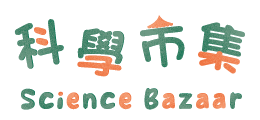
During the HK SciFest 2025, the G/F Exhibition Hall of the Science Museum will be transformed into a ‘Science Bazaar’, featuring activity booths with hands-on science demonstrations, mini-exhibitions, specimen showcases, mini-workshops, bringing participants a wonderful experience in learning science.
Booth holders include: Chow Sang Sang Precious Metal Laboratory; Geotechnical Engineering Office, Civil Engineering and Development Department; Firefly Conservation Foundation; Hong Kong Applied Science and Technology Research Institute; Jockey Club Gerontechnology and Smart Ageing in Place Project, Lingnan University; Macau Pharmacology Association; Nina Park by Chinachem Group; Department of Science and Environmental Studies, The Education University of Hong Kong; The Hong Kong Association for Computer Education; The Hong Kong Bird Watching Society; Jockey Club Museum of Climate Change, The Chinese University of Hong Kong; Hong Kong Biodiversity Museum, The University of Hong Kong; Hong Kong Light Pollution Research Project Team, The University of Hong Kong; The Office of the Director of Apprenticeship, Vocational Training Council.
You will become a gem detective and learn how to use scientific methods to identify the authenticity of gems, understand the unique properties of precious metals, and solve scientific mysteries hidden in gems to find lost treasures!
Whether you are a gem lover, a science fan, or simply curious about the stories behind jewelry, there is something here to surprise you!
**Don’t forget to save the date, we’ll see you then! **
This activity is supported by the RAE 2026 Fund of The University of Hong Kong and received funding from the Environment and Conservation Fund (Project ID: 113/2022) of The Government of the Hong Kong Special Administrative Region. Any opinions, findings, conclusions or recommendations expressed in this material do not necessarily reflect the views of the Government of the Hong Kong Special Administrative Region and the Environment and Conservation Fund.
Join us for an unforgettable journey into the heart of Hong Kong's diverse wildlife!
Our Local Animals Specimen Showcase invites you to explore amazing specimens like the elusive pangolin, the majestic Asian barred owl, and a variety of vibrant local dragonflies. This engaging and educational experience will not only highlight the unique characteristics of these incredible animals but also their vital roles in our ecosystem. But that's not all! Capture the moment with our exciting 3D photo-taking filter, letting you snap virtual selfies alongside these fascinating specimens. Come and immerse yourself in the beauty of Hong Kong's rich biodiversity. Together, let’s appreciate and protect the wonders of nature! Don’t miss out—see you in HK SciFest 2025!
This workshop offers not only the excitement of archaeological excavation but also a fantastic opportunity to gain deeper understanding of the intricacies of archaeological work and the characteristics of ancient creatures. Plus, you will get to take home your own excavated discoveries as unique mementos! Join us and let’s explore the wonders of archaeology together!
Join us to discover the wonders of nature and enjoy an engaging experience with history and science in a vibrant, interactive setting! Nina Park is excited to welcome you!
What is the Low-altitude Economy (LAE)? How can we use various aerial vehicles (such as drones) to makes our lives more convenient?
Hong Kong Applied Science and Technology Research Institute (ASTRI) will showcase a virtual autonomous vehicle driving game, a C-V2X technology interactive game and a drone display with the theme "Smart 'Flying' and 'Travelling'". We invite you to experience the driving game, learn about electric vehicle and autonomous driving technologies, explore how these technologies enhance road safety and convenience. You can also discover drone technology to gain deeper insights into the development of innovative technologies.
Welcome to visit our booth. Let's "drive the future" with ASTRI!
This initiative focuses on addressing the environmental and public health risks associated with indoor air pollutants through scientific research and educational initiatives. The educational kit includes a comprehensive manual on IAQ monitoring techniques and instruments, enabling users to perform calculations, conduct statistical analyses, and compare data across various indoor environments.
Innovative Solution for Microplastic Pollution Detection
This invention advances the total organic carbon (TOC) analysis with an all-in-one sample pre-treatment device to efficiently and accurately assess microplastic (MP) pollution levels in different water samples. Compared with typical methods, this invention saved pre-treatment and analysis time by over 70%, and capital and operating costs by above 80% and 90%, respectively. Equipped with a web-based mobile app, users can monitor and control the pre-treatment device and collect real-time data remotely. It is applicable to determine MP mass representatively. Unlike other commonly used MP quantification methods, its accuracy is not affected by the complex nature of MP pollution and environmental conditions.
Here, you can get up close with fireflies, spiders, scorpions, and an African bullfrog. Learn about their unique ecology and survival skills. Our booth also offers an interactive experience! Under the guidance of our staff, you can have a close encounter with these fascinating creatures. Come and discover the wonders of nature!

